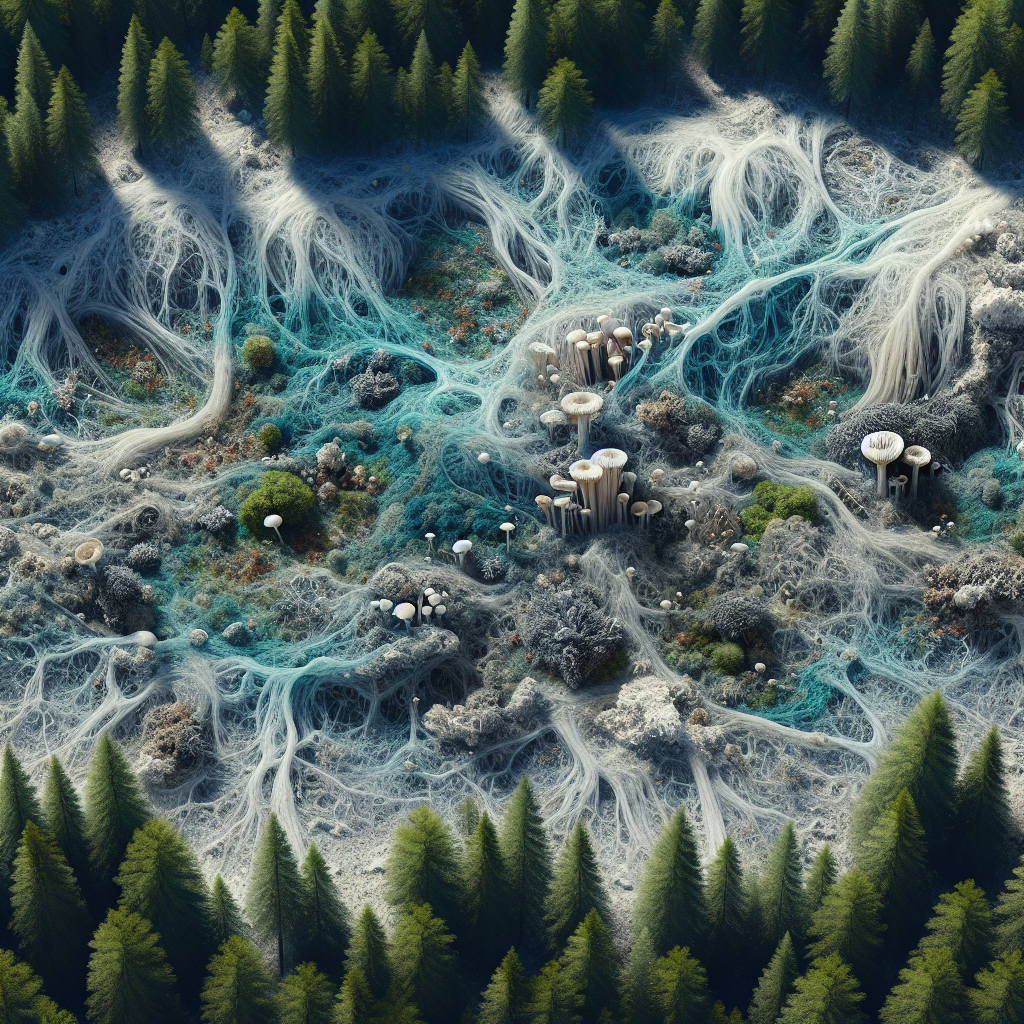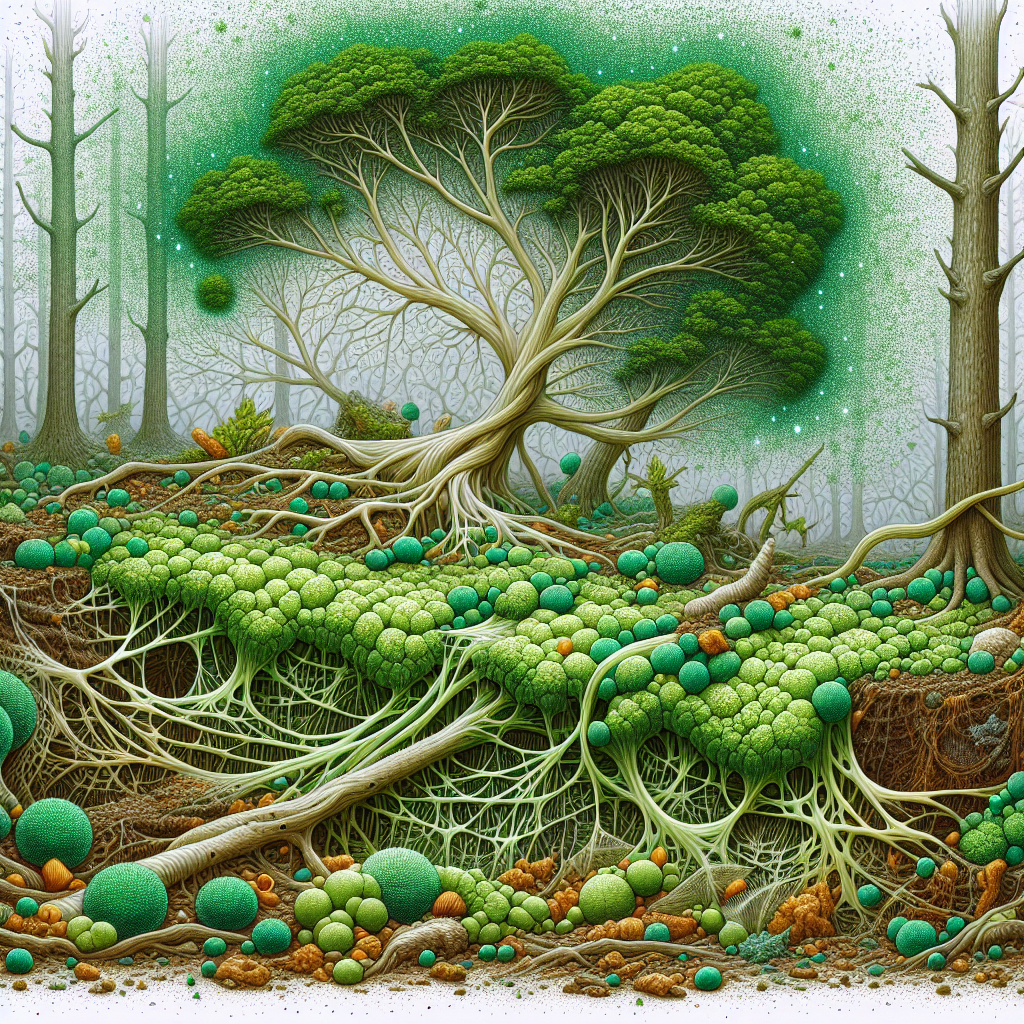Navigating the world of fungal networks can be complex, but you’re about to embark on an enlightening journey that touches on an under-explored topic – the impact of green contamination on mycelium. “Unveiling the Impact of Green Contamination on Mycelium” is an essential read for anyone invested in understanding the intricacies of fungal biology and environmental science. This piece presents a thorough analysis on the effects of green contamination and how it alters mycelium’s growth patterns, functionality, and overall health. Brace yourself to gain a novel perspective on this intertwined relationship that fosters a deeper comprehension of the ecosystem’s dynamics.

Understanding Green Contamination in Mycelium
Definition of Green Contamination
Green contamination, primarily caused by various strains of microorganisms such as green molds, refers to the condition when unwanted growth of mold colonies occur on the mycelium. This often results in the degradation of mycelium, disrupting its cellular structure and life cycle, leading to inhibitions in its function and growth.
Explanation of Mycelium
Mycelium is the vegetative part of a fungus, consisting of a network of fine white filaments, known as hyphae. It is crucial for the growth and development of mushrooms, as it effectively absorbs nutrients from the substrate it colonizes. Given the right conditions, the mycelium will work its way throughout a substrate and consolidate its hold on its environment by producing fruiting bodies, such as mushrooms.
Understanding Mycelium Structure and Function
The structure of mycelium is essentially a multi-directional network of hyphae, which are typically tubular and filamentous in shape. The key functions of mycelium include nutrient and water absorption, reproduction, and substrate colonization. It does so by secreting enzymes into its surroundings, which break down complex organic materials into simpler forms, which the fungus then absorbs and uses for growth and reproduction.
The Science behind Green Contamination on Mycelium
Process of Green Contamination
Green contamination typically occurs when a mycelial network is invaded by unwanted mold, usually of the green variety, hence the name. These unwanted guests infiltrate the mycelium and consume the nutrients intended for mushrooms, thus hindering the growth and development of the fungus.
Lifecycle of Green Contaminants
Green contaminants generally follow a lifecycle comprising of four stages; spore production, germination, branching, and sporulation. Initially, the mold spores are produced and dispersed. Once these spores find a suitable environment, they germinate, eventually leading to the formation of hyphae, which continues to branch out, exploiting the available nutrients. The cycle completes when the extensive hyphal network forms sporangium at their tips, leading to a new round of spore production.
Factors Leading to Green Contamination
Common factors responsible for green contamination in mycelium include improper sterilization procedures, unsuitable environmental conditions, and lack of hygiene during mushroom cultivation. This contamination can also occur due to cross-contamination from other infected growth mediums.
Types of Green Contamination on Mycelium
Trichoderma or Green Mold Contamination
Trichoderma is a type of green mold known for its ability to rapidly colonize and effectively outcompete other fungi, such as mycelium. This mold is particularly damaging to the growth of mycelium, as it may modify the overall environment to its advantage by releasing certain toxic substances.
Penicillium or Green-Blue Mold Contamination
Penicillium is another common explicator of green contamination in mycelium, producing a distinctive green-blue mold. This mold is equally damaging to mycelium as it competes for the same nutrients, making it challenging for mycelium to thrive.
Aspergillus or Green-Purple Mold Contamination
Aspergillus is a green-purple mold often found contaminating mycelium. It is particularly hazardous due to its ability to produce mycotoxins, which can harm both the mycelium and potentially, the individuals consuming the infected mushroom.

Signs of Green Contamination in Mycelium
Changes in Mycelium Appearance
One of the initial signs of green contamination is a visible change in the appearance of the mycelium. Rather than the typical healthy white, the mycelium may start appearing in shades of green or other colors, indicating the presence of mold.
Alteration in Mycelium Growth
Green contamination typically results in a noticeable impediment in the growth of mycelium. Given that these molds are stealing away the nutrients, the growth of mycelium may become stunted or may halt altogether.
Unusual Smell or Texture
Another sign of green contamination is an unusual smell or texture from the mycelium or the surrounding substrate. Depending on the type of contaminant mold, this could range from a musty smell to a slightly wet or slimy texture.
Impact of Green Contamination on Mycelium Growth
Effects on Mycelium Cell Structure
Green contamination can significantly impact the cell structure of mycelium, often causing deformation or degradation of hyphae. This structural impairment often results in compromised function and growth of mycelium.
Impediment in Mycelium Spreading
Another significant impact of green contamination is the impediment in the spread of mycelium. As the infiltrating mold consumes the available nutrients, the mycelium struggles to colonize its substrate, thus hampering its overall spread and development.
Changes in Nutrient Uptake
Green contamination also influences the nutrient uptake of mycelium. Being outcompeted by molds for nutrients, the mycelium often faces nutritional deficiency, resulting in slower growth and development, and in severe cases, death of the fungus.
Impact of Green Contamination on Mushroom Cultivation
Losses in Mushroom Yield
Undoubtedly, the most direct and significant impact of green contamination on mushroom cultivation is yield loss. Given the detrimental effects on mycelium growth and development, there is often a consequent reduction in mushroom production.
Deterioration in Mushroom Quality
Along with yield loss, green contamination often leads to a marked deterioration in the quality of mushrooms. This is primarily due to the physical and nutritional stress that the mycelium endures during green contamination, which has a knock-on effect on the fruits it produces.
Challenges in Mushroom Cultivation
Increased instances of green contamination pose significant challenges to mushroom cultivation. Contaminated crops demand more time, resources, and effort for restoration and regrowth, thus making the cultivation process more challenging and less profitable.
Biological Impacts of Green Contamination
Influence on Microbial Community
Green contamination can significantly influence the microbial community within the natural environment of mycelium. Contaminant molds, with their rapid growth and colonization, often alter the microbial population dynamics, which can potentially disrupt the ecological balance.
Effects on Biodiversity
Green contamination can have serious implications on biodiversity, due to the ecological disruptions it causes. The high competitiveness of these green molds can potentially reduce species diversity by outcompeting native fungi and other microorganisms.
Potential for Disease Transmission
Certain green molds like Aspergillus, involved in green contamination, are known to produce mycotoxins, which are harmful to humans and other organisms. Thus, green contamination could potentially increase the risk of disease transmission when contaminated mushrooms are consumed or when contaminated substrates are disturbed, resulting in spore inhalation.
Prevention and Control of Green Contamination on Mycelium
Strategies for Preventing Green Contamination
Preventing green contamination in mycelium primarily involves adhering to strict hygiene and sterilization procedures. This includes sterilizing growth substrates, ensuring clean cultivation practices, and regularly monitoring for signs of contamination, such as unusual color change or growth retardation.
Methods for Controlling and Eradicating established Contamination
Controlling and eradicating established green contamination can be quite challenging. It usually involves removing and discarding the contaminated mycelium and substrate, thorough cleaning and sterilization of the cultivation environment, and inoculating new, uncontaminated mycelium.
Role of Technological Advancements in Mitigating Green Contamination
Use of Biotechnology in Contamination Prevention
Biotechnology provides potential solutions to prevent green contamination. Genetic engineering offers prospects for creating mycelium strains that are resistant to specific molds, reducing the potential of green contamination.
Application of Fungal Genetics for Contamination Resistance
Insights from fungal genetics can aid in developing mycelium strains resistant to green contamination. By understanding specific genetic traits of mycelium that make it susceptible to certain molds, researchers can aim to develop genetically modified strains with enhanced resistance.
Innovations in Mycelium Cultivation Practices
Technological innovations in mycelium cultivation practices can also reduce the risk of green contamination. Automated, highly controlled environments can maintain optimal growing conditions for mycelium, reducing its susceptibility to molds.
Future Perspectives on Green Contamination in Mycelium
Potential Research Opportunities
Future research opportunities lie in understanding the precise molecular interactions between mycelium and green molds, aiming at developing effective strategies for contamination prevention and control.
Role of Climate Change in Green Contamination
Climate change, with its implications on temperature and humidity, can potentially influence the prevalence and severity of green contamination in mycelium. Future research must consider the impact of changing climatic conditions on the dynamics of green contamination.
Importance of Public Awareness and Education
In the face of increasing green contamination, public awareness, and education are invaluable. Informing individuals about the implications of green contamination, and the importance of strict hygiene and sterilization procedures, may go a long way toward reducing this problem in the future.
